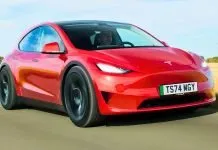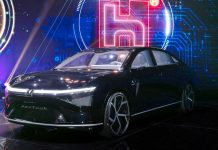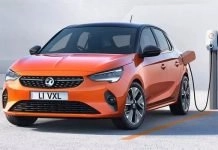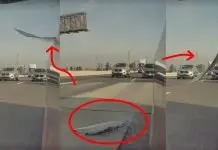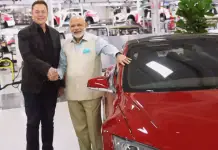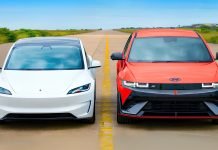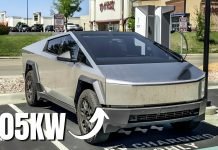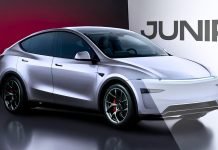A tragic Tesla Model S accident has sparked a new legal debate concerning the present Autopilot technology.
Genesis Giovanni Mendoza Martinez, a 31-year-old California resident, tragically died in a crash last year, while his Tesla was operating on Autopilot. His family has now filed a lawsuit, alleging that the automaker’s claims on Autopilot are downright misleading.
The family is accusing Tesla of bragging about the safety and capability of its self-driving technology as the reason for their son’s death. While Tesla maintains that human error is the issue and not the software.
Here’s the whole story!
Tesla Model S Autopilot Accident
The fatal crash occurred in California on Interstate 680, in the early hours of the morning on that unfateful day. Giovanni Mendoza was traveling in his Tesla Model S, at 71 mph with Autopilot engaged. The EV self-driving software failed to detect a fire truck parked across the lanes. The automaker confirmed that the EV was indeed on Autopilot before the crash.
The truck’s emergency lights were on, parked to redirect traffic after another collision. Mendoza’s car rammed into the fire truck at that high speed, leading to his death and leaving his brother Caleb sitting next to him with serious injuries.
According to the local authorities, four firefighters at the scene also sustained minor injuries.
Data retrieved from the Tesla revealed that the vehicle had been in Autopilot mode for 12 minutes before the crash. During this time, Mendoza made no inputs to the accelerator or brake pedals, although he maintained intermittent contact with the steering wheel.
The Lawsuit
Mendoza’s family in the latest lawsuit is claiming that Tesla, and its CEO Elon Musk, falsely advertised the Autopilot and Full Self-Driving as being fit for operations.
Their lawsuit states that Mendoza believed in all the claims by the automaker and trusted Tesla EV to handle driving tasks safely. The family alleges that Tesla’s autonomous technology was fundamentally flawed and the automaker made half-baked truths about its capabilities.
The self-drive feature was unable to recognize and respond to emergency vehicles, even with flashing lights.
Attorney Brett Schreiber, representing the family’s lawsuit, further criticized Tesla for using public roads as a testing ground for its flawed technology. He argued that the company’s approach—releasing software updates instead of recalling defective systems—puts drivers, passengers, and first responders at risk.
Schreiber called Tesla’s actions “reckless” and “entirely preventable.”
What Tesla Has to Say On The Accident?
Tesla has denied to take responsibility for the crash, arguing that its vehicles are reasonably safe under applicable laws. The automaker suggested that it could be the driver’s error or improper maintenance of the EV that contributed to the accident.
Tesla in its official statement consistently maintained that no additional warnings could have prevented the crash.
This defending statement is in line with Tesla’s longstanding stance requiring active driver supervision when its Autopilot and FSD systems are in use. Tesla warns all its drivers to keep their hands on the wheel at all times and remain ready to take control at any moment.
Tesla’s Autopilot Concerns
The U.S. government and numerous safety advocates have time and again criticized Tesla for highly overstating its self-driving features. Transportation Secretary Pete Buttigieg called out Tesla for misleading marketing several times saying Tesla creates a false sense of security among drivers.
The lawsuit points to all the public statements made by Elon Musk on Tesla’s features and Tesla’s official advertising of this issue. The complaint states several instances where Musk suggested that fully autonomous driving was imminent.
This lawsuit highlights a 2016 claim that the Tesla Autopilot feature could perform better than a human driver. Despite all these promises, Tesla knew its technology at the time could not handle even common roadway scenarios without due driver input.
The List of Tesla’s Accidents Is Long
The Mendoza family’s complaint lists numerous other Tesla crashes involving Tesla vehicles in Autopilot or self-driving mode. These incidents mostly include scenarios where the self-driving system failed to detect even stationary objects or emergency vehicles.
In a similar accident, the owner of a Tesla Model S on Autopilot lost his life when his Tesla failed to notice a truck turning and crashed into it in 2016.
Critics argue that Tesla purposely turned a blind eye instead of addressing these critical issues before promoting its Autopilot features.
The complaint also alleges that Tesla actively concealed Autopilot-related customer complaints and crash data. It claims the automaker even trained employees to avoid the documentation of such issues and made its customers sign nondisclosure agreements for getting warranty repairs. These practices, if true, could possibly violate consumer protection laws.
Bottomline
Machines mirror our flaws, even smart machines will depend on wiser choices. The sad death of Genesis Giovanni Mendoza Martinez has again pointed questions on Tesla’s Autopilot system and the automaker’s ethical responsibilities while developing autonomous vehicles. We will keep you posted as the legal battle unfolds as it will likely serve as a crucial test of new-age self-driving vehicle’s accountability.



